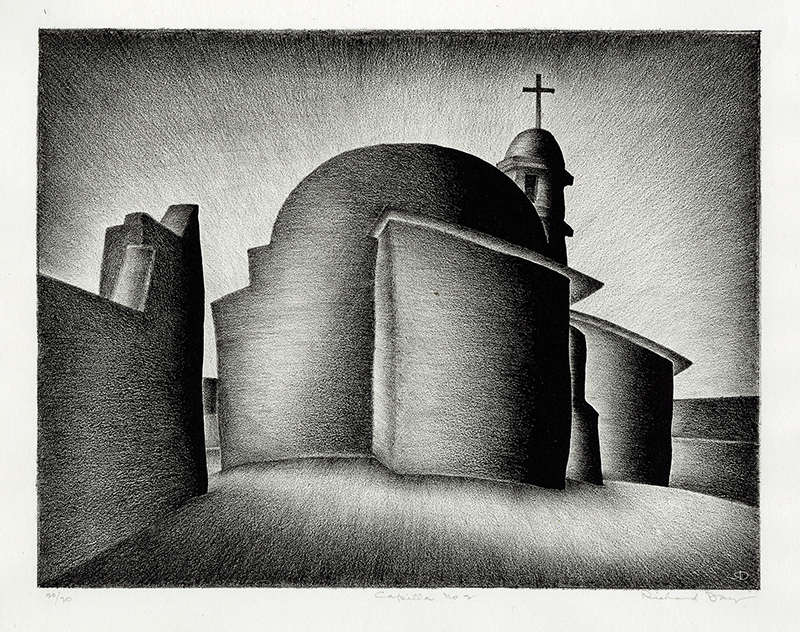Capilla No 2 is a lithograph from 1930 by American printmaker Richard W. Day (1896-1972). It is pencil signed, titled, and editioned 20/20. It was probably printed by Paul Roeher in Los Angeles on Basingwerk Parchment wove paper and the image measures 7-9/16 x 9-13/16 inches.
Capilla No 2 is one of a series of lithographs depicting places and landscapes in Mexico that were published by the artist in the early 1930s. This lithograph is illustrated as plate 4 in Merle Armitage’s The Lithographs of Richard Day, published by E. Weyhe in 1932. In his introduction, Carl Zigrosser praised Day: “His work must be reckoned with. Here is a new lithographer, fresh in design, original in point of view, enlivened with a sense of humor. Outstanding among his recent works, I think, are Hut, New Mexico; Hotel at Cuernavaca; and Mexican Landscape for their striking juxtapositions and arrangement of plastic form.”
Richard Welsted Day, printmaker and art director, was born in Victoria, British Columbia on May 9, 1896. His education consisted of private tutoring, a natural talent for drawing which he developed without professional lessons, and voracious reading. After serving with the Canadian army in World War I, he returned to Victoria and began his career as a commercial artist.
In 1920, Day arrived in Hollywood hoping to find a career in the emerging motion picture industry. Befriended by Eric Von Stroheim, he was hired as a scene painter for the film Foolish Wives but was soon elevated to art director. The pursuit of his new career led him to MGM and then to 20th Century Fox where he became Supervising Art Director. Day worked on hundreds of films which earned him forty Academy Award nominations and his genius was awarded seven times with the coveted Oscar for Dark Angel, How Green Was My Valley, This Above All, My Gal Sal, A Streetcar Named Desire, On the Waterfront, and Dodsworth. He designed and built some of the largest sets of the era and, in 1935, Day was the highest-paid art director in Hollywood.
During the 1930s Day produced a number of very fine lithographs which were professionally printed by Paul Roeher in Los Angeles. These were shown at Jake Zeitlin's Book Shop in Los Angeles and, in 1932, Merle Armitage wrote The Lithographs of Richard Day. Day’s lithographs were exhibited in 1935 at the California-Pacific International Exposition in San Diego and are represented in the collections of the Library of Congress and the National Gallery. Richard W. Day died in Woodland Hills, California on May 23, 1972.



